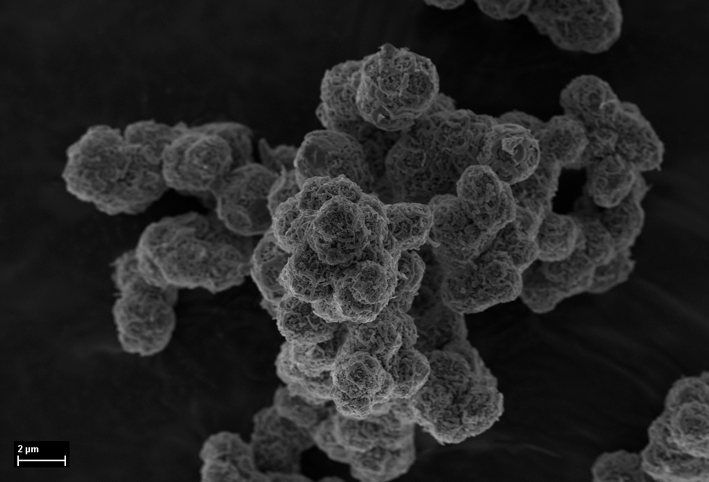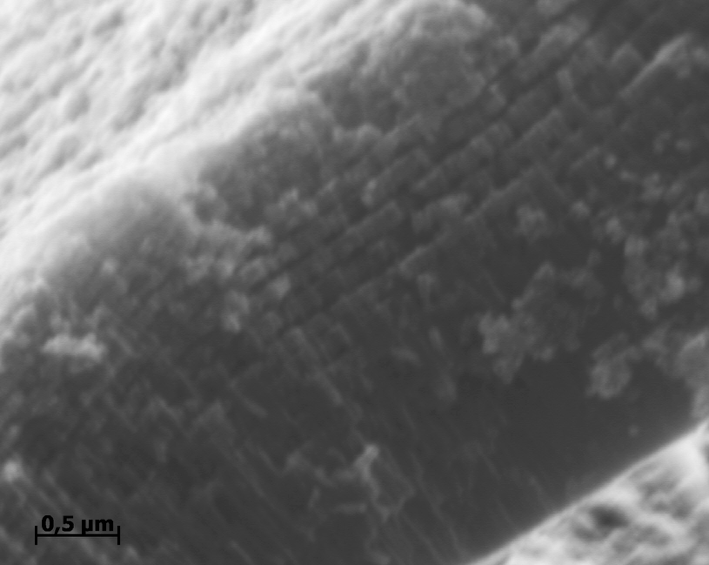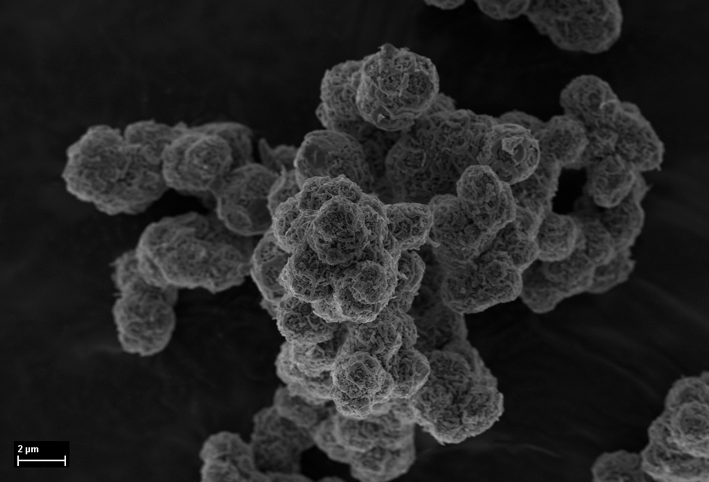In our group, several research directions devoted to titanium dioxide are elaborated. The first direction is the development of new generation of cosmetic pigments based on amorphous as well as various crystalline modification of titanium dioxide with the particles of tunable shape and size of 1-10 μm.

Micrograph of TiO2 particles.
The second direction is the development of scalable approaches for the formation of one-dimensional (with the periodicity in one spatial direction) photonic crystals based on anodic titanium dioxide with a tunable position of photonic band gaps in the energy spectrum.
Photonic crystals possess a number of photonic band gaps and can be used for the control of light flows. However, the defects in a photonic crystal structure lead to degradation of their optical characteristics. Thus, the development of a simple, but effective technology for the formation of photonic crystals with minimal number of defects is one of the actual problems in materials science.
Photonic crystals based on titanium dioxide are promising as:
- elements of optical filters and sensors;
- components of dye-sensitized solar cells;
- photoanode in the photocatalytic decomposition of water;
- photocatalyst for the decomposition of organic compounds.

Micrograph of a layered film of anodic titanium oxide.

